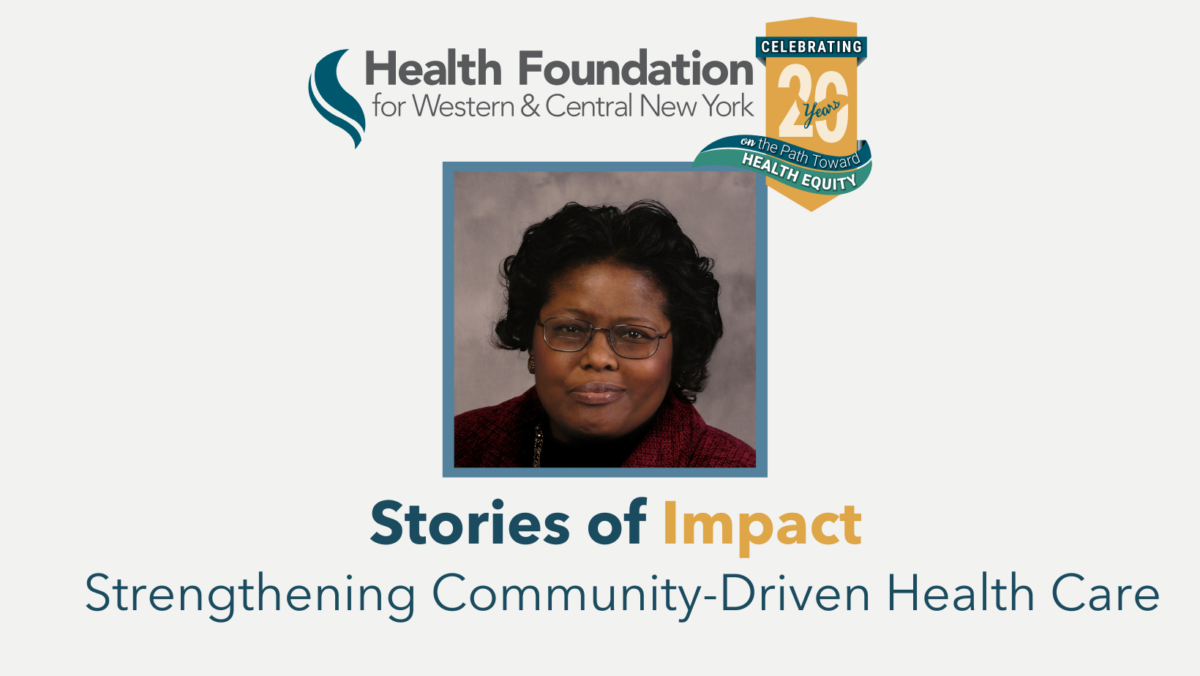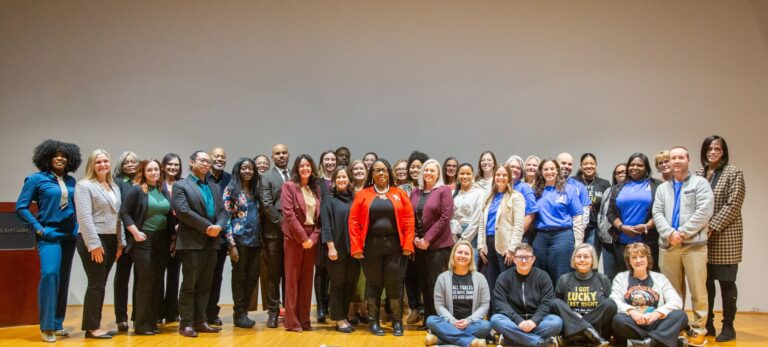As we celebrate the Health Foundation’s 20th year on the path toward health equity, we are sharing the stories of our grantees, fellows, trustees, and other partners and the impact they have made on the community’s health over two decades.
Leola Rodgers has dedicated her career to improving the health of the community in Syracuse—a perspective and dedication she brought to her roles with the Health Foundation for Western & Central New York. Rodgers is the former president and chief executive officer of Syracuse Community Health Center, and was previously the associate administrator at Upstate Golisano Children’s Hospital of SUNY Upstate Medical University.
Her first interaction with the Health Foundation was as a Health Leadership Fellow, the beginning of a relationship that would eventually lead to her serving as chair of the board of trustees in 2018.
“I spent the better part of my years in Syracuse having some kind of connection to the Health Foundation,” said Leola. “I’d only been with Upstate for about two or three years before I became a Fellow. The program was unbelievable for me. I met some of the most intelligent people I’d ever met, and the level of diversity was so incredible, at a time when that wasn’t the case everywhere in health care.”
Leola joined the Health Foundation’s board of trustees in 2010, and witnessed a number of important programs and initiatives develop during that time, including the Health Foundation’s commitment to advocating for health care for all people in New York starting in 2017.
“When I was chair, we were trying to take a more global view by saying that health care was a right for everyone. We did a lot of work in our strategic planning process to try to figure out what we were going to do and how could we get others to start moving toward that same way.”
Another key initiative—and one that directly benefited from Leola’s expertise and experience—was the Health Foundation’s efforts to strengthen FQHCs in western and central New York.
Federally Qualified Health Centers are community-based organizations that provide comprehensive primary and preventive care, including oral health and mental health/substance abuse services, to underserved populations, regardless of their ability to pay or health insurance status.
Because these organizations are such a critical part of the safety net, the Health Foundation established a booster fund in 2010 to assist organizations with New Access Point applications, converting from “Look-Alike” to FQHC status, and in exploring opportunities to expand services and work collaboratively.
As a result of this investment, there was an influx of more than $3.37 million in annual Health Center New Access Point grants from the federal government to expand or establish New Access Points in western and central New York. As a result, the number of people in western and central New York seen at Federally Qualified Health Centers nearly doubled from 2010 to 2014.
Leola noted that the impact of that work is still evident today.
“I thought about the impact of the FQHC program when the pandemic started,” said Leola. “I saw all the services that community health care centers were providing that other health systems couldn’t. Because the FQHCs were in the community, they were trusted by the people they were trying to reach. I saw them step up to the plate and do what they need to do to meet that emergency need.”
When Leola reflects on the Health Foundation’s long-term legacy, a commitment to learning, listening, and flexibility with our grantee partnerships comes to mind.
“We constantly sought to find out whether or not we were making a difference. Are we achieving what we said we’re going to achieve? And sometimes we didn’t achieve what we said we were going to achieve; we accomplished something else. That was just as good.”



